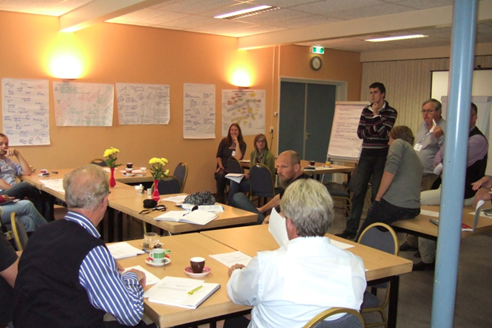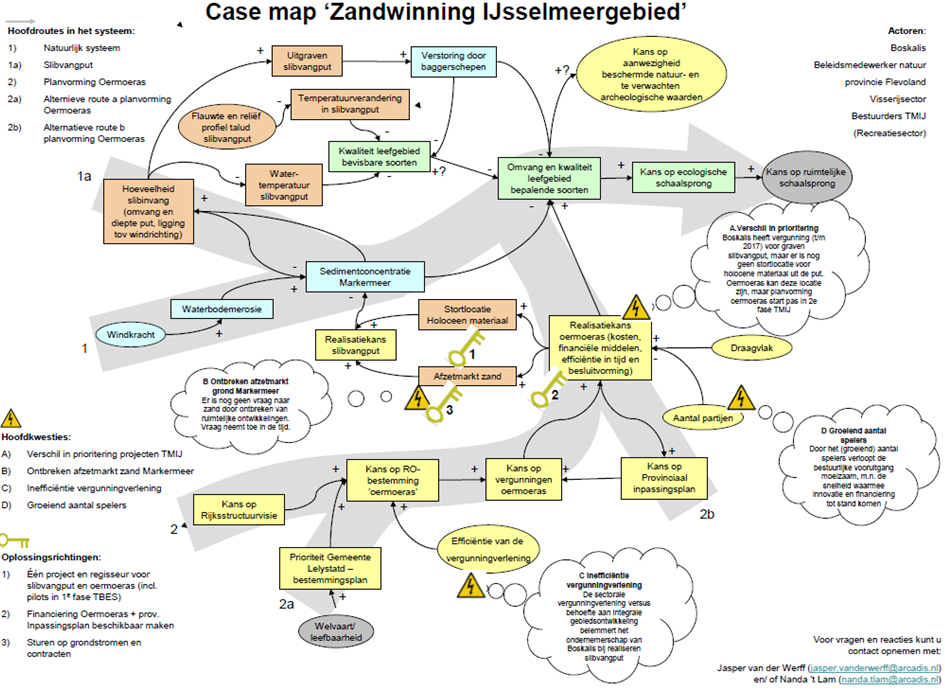Co-construction of system knowledge
The overall objective of the IJsselmeer case study is to develop a coherent understanding of the complex relations between the physical, ecological and governance systems amongst stakeholders at a regional and national level. The initial plan was to combine two methods in the case study:
- a Community of Practice (CoP), in which members share and compare knowledge and experiences and jointly develop a coherent system understanding (see figure 8)
- the development of an easy-to-access and easy-to-use set of causal loop diagrams and models.

The CoP consists of people from different organisations (public, private, civil society) with a professional interest in the overall subject eco-engineering in the IJsselmeer region as a common denominator. In addition to the members of the CoP, experts, stakeholders or policy makers can be invited to the meetings to share their experiences. The CoP-members formulate the agenda of the different meetings themselves. The Focal points of the agenda are questions or issues arising from the members’ daily professional experience. Examples of topics on the CoP-agenda are:
- Sand mining for commercial purposes in combination with wetland development (sediment and ecology)
- Development of urban areas on islands in the lake in relation to ecological development
- Ecodynamic designs for flood protection systems
- Small scale sand engine experiments Oude Mirdumerklif and Hindeloopen and Workumerwaard
There were two main reasons to apply and further develop systems thinking in relation to the IJsselmeer case. The first reason was that co-construction of causal loops would help the CoP-members in developing knowledge relevant to decision making (‘getting the big picture’). The second one was that a disciplined use of system representations during discussions would facilitate learning about the behaviour of this complex socio-ecological system

Experiments were made with different methods of systems thinking during the CoP-meetings, starting with an observational approach and moving towards more interactive methods. In the former case CoP-members discussed the topic with the help of discussion techniques (e.g. interview) and observers reported the contents of the discussions. In the latter case, not only the observers but also CoP-members reported on their own subgroup discussions with the help of mindmap techniques.
After every meeting, observers translated the discussions into a cause-effect system representation. The diagram showed variables and cause-effect relations of the issues discussed in the CoP. The feeling among the CoP-team was that these ‘cause–effect representations’ did not capture the richness of the discussions, so it was decided to extend the cause effect representation with the following mindmap-elements:
- main issues
- key solutions
- main reasoning routes
In figure 9, elements connected with arrows represent cause-effect relations with negative or positive feedbacks onto social and physical processes. The brown, blue and green lines represent components of the natural system, the yellow areas depict processes in the governance system. The lightning bolts and clouds address priority issues (conflicts, uncertainties, obstacles, opportunities) and the key symbols indicate possible strategies. In essence this case map is a causal loop – mindmap hybrid giving an overview of the system and its dynamics.
